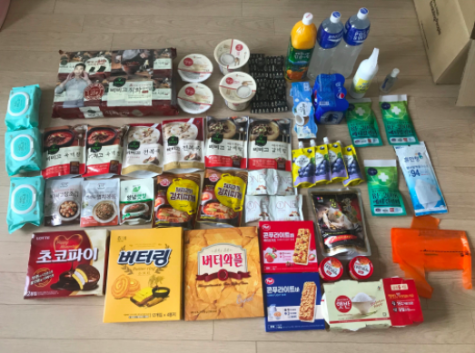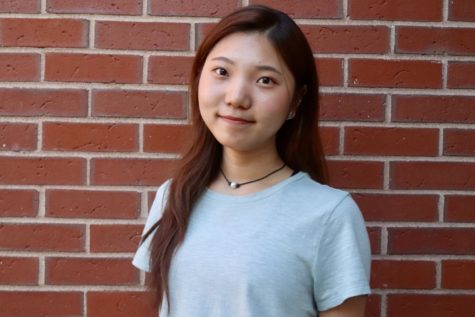Other side of the globe: A COVID-19 success story
![Pictured above is of one of the COVID-19 screening clinics in Pohang, South Korea. “The government has served as a leader and has played a key role in ensuring that medical experts are well deployed in cities that [need] support during this time,” Dr. Katrina Park said. “My country is in danger, and there is a place that needs my ability as a doctor, so I volunteered without thinking because it was something I could do.”](https://waylandstudentpress.com/wp-content/uploads/2020/06/Screen-Shot-2020-06-15-at-1.41.12-PM.png)
Credit: Katherine Kim
Pictured above is of one of the COVID-19 screening clinics in Pohang, South Korea. “The government has served as a leader and has played a key role in ensuring that medical experts are well deployed in cities that [need] support during this time,” Dr. Katrina Park said. “My country is in danger, and there is a place that needs my ability as a doctor, so I volunteered without thinking because it was something I could do.”
June 22, 2020
Since the initial outbreak of the coronavirus in Wuhan, China, in Dec. 2019, different countries around the world have been taking similar yet contrasting approaches to protect their citizens’ lives from the lethal disease. The virus started to spread to other Asian countries in Jan. 2020 and eventually became a pandemic in March 2020.
In South Korea, one of the neighboring countries of China, the virus first entered its border in Jan. 2020 when some people who entered the country’s airport from Wuhan tested positive for the virus after showing symptoms.
Soon after, the virus rapidly spread over South Korea, with the most number of positive cases concentrated in Seoul and Daegu, two of the major cities in the country. Due to the sudden outbreak, the Korean Center for Disease Control established COVID-19 screening centers throughout the country, calling the healthcare workers to help run them.
Although most of the healthcare workers were immediately put into work at the frontlines, Seoul and Daegu have experienced a shortage of doctors for the first few months since the outbreak. Dr. Katrina Park, who works at Yunsejun 365 Clinic as a family physician, volunteered to work in one of the screening centers in Daegu after hearing about the situation in Daegu.
“It wasn’t something that I had a choice for,” Park said. “My country is in danger, and there is a place that needs my ability as a doctor, so I volunteered without thinking because it was something I could do.”
Although South Korea was one of the countries that experienced the outbreak early on, there have been many analyses about what painted it as one of the only countries that is handling the pandemic well.
Park believes that South Korea’s COVID-19 success story was possible due to the government support, the medical system and people’s cooperation with the government’s decisions.
“The government has served as a leader and has played a key role in ensuring that medical experts are well deployed in cities that needed support during this time,” Park said. “We were able to get through the time of shortage of doctors due to the government who supplied military doctors. Also, the government showed complete respect and support for the medical professionals’ decisions.”
To prevent the virus from spreading further, the government and the Center for Disease Control made it mandatory for those who tested positive for the virus and foreigners entering the country to stay in self-quarantine for two-weeks.

During this self-lockdown, individuals must download the official quarantine app developed by the government and record their body temperatures and health conditions daily. The information then gets sent to the individually-assigned local public health center officer who reviews it. The quarantiners who entered from a foreign country receive a box containing a two-weeks supply of food and necessities from the government.
The government emphasizes that it is crucial to completely isolate individuals who are in self-quarantine to prevent secondary infections. To make it possible, the government made it illegal for the quarantiners to be outside of their quarantine site. The quarantine app has a location tracking system installed that is connected to the health center computer, which lets the officers keep track of the quarantiners’ locations.
“When our system reports that a quarantiner has violated the law and got outside, the police and public officials get dispatched quickly to get them,” the local public health center of the city of Pohang said. “If a quarantiner reports symptoms of the virus, an ambulance is sent to the quarantine site to transport the quarantined person to the hospital quickly.”
Once a positive case is confirmed, the government immediately reveals the confirmator’s entire mobile route to the public so that anyone who had overlapping routes on the same day can go to the hospital and get tested for the virus.
“I think it’s very beneficial for us citizens to know the route that the virus confirmator traveled,” Yumin Nam, who quarantined after her arrival from the Philippines, said. “[Due to that], people are also doing a much better job than any other countries in disinfection, wearing masks [and being cautious in public.]”
As of now, experts say that it is likely that the virus won’t disappear completely within one to two years. Park believes that people will have to adapt to the current situation by making it a habit to social distance, wear masks in public and wash hands consistently.
“I’m seeing lots of teenagers starting to go out with their friends without alertness in mind, and I understand that they want to have fun and escape from boredom,” Park said. “But they should keep in mind that although they can recover fast from the virus, it can cause secondary infections to my parents, loved ones, seniors, people who currently have illnesses and may end up losing them. Please remember we, not me, and be careful for our families and society.”


























